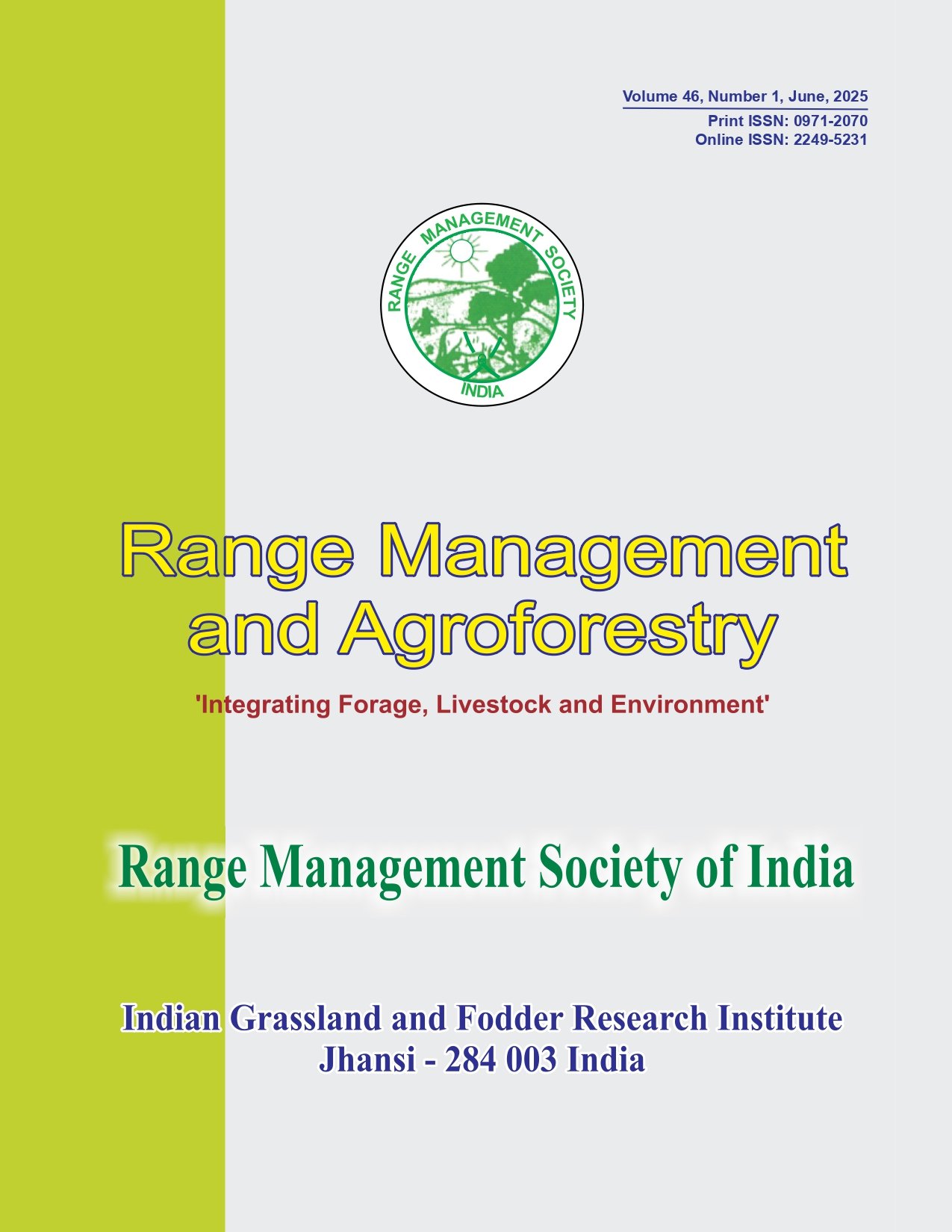Seasonal variation in chemical and biochemical constituents of tropical top feed species: components in silvipasture system
Keywords:
Flavan, IVDM, Phenolics, Protein-precipitating capacity, Tree leavesAbstract
The study aimed to know the distribution of anti-nutritional factors in terms of phenolics (total phenolics-TP, condensed tannin-CT, proanthocyanidin-PA), PA fractions, relative degree of polymerization and their biochemical evaluation in relation to nutritional attributes such as crude protein (CP), fiber fractions (NDF, ADF, hemicellulose, cellulose and ADL), IVDMD, IVCPD in leaves of Anogeissus pendula (AP), Ficus religiosa (FR), Ficus recemosa (FRe) and Eugenia jambolana (EJ) trees harvested in spring, monsoon and autumn. Leaves of EJ and FRe had lower (6.83-9.6 %) and higher (11.32-11.51%) CP compared to AP (9.8-10.6)and FR (10.7-11.4%). NDF and ADL contents were highest inAP (46.63-58.61%) and EJ (14.7-23.6%), respectively. Accumulation of TPs and CT was highest in EJ (5.76-8.03% and 13.5-32.6%), whereas lowest in FR (1.35-1.86 and 1.77-5.67%) in all three seasons. Leaves of FReand FR had highest and lowest level of PAs (11.71-27.78 and 3.4-11.37%).The distribution of PA showed that values of free PA increased from spring to monsoon and again went down in all four species that revealed the quality of feed. The IVDMD of FR leaves was relatively higher (55-46%) against lowest of AP (38-25%). Protein precipitating capacity (PPC) and protein perceptible phenolics (PPP) were highest in EJ (29.7-114.8 mg g-1 and 20.68-77.91%) followed by AP (11.3 to 84.5 mg g-1 and 17.62-72.11%), FRe (12.6-44.7 mg g-1 and 32.59-73.46%) and FR (44-55 mg g-1 and 8.34-9.51%). Study revealed that nutritional composition, polyphenolic contents and biochemical properties of TP, CT and PA differed among tree leaves and seasons. The nutritive value of tree leaves was found to be better in autumn as compared to spring and monsoon.




